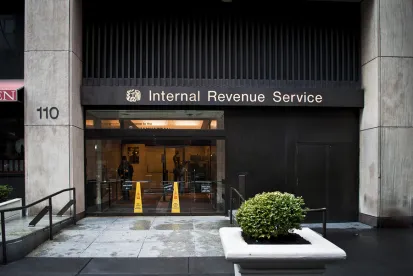Throughout the COVID-19 pandemic, the IRS has taken steps to temporarily increase participant access to funds in tax-qualified retirement plans, such as making available coronavirus distributions, increasing participant plan loan limits and permitting delayed participant loan repayments.
In some tax-qualified retirement plans, participant elections and required spousal consents for certain distributions and loans must be witnessed in the physical presence of a plan representative or a notary public. It has been difficult to satisfy this requirement and to comply with recommended distancing measures and stay-at-home orders. As a result, in Notice 2020-42, the IRS granted temporary relief for retirement plan participant elections and spousal consents required to be witnessed by a plan representative or a notary public.
This relief applies retroactively, from Jan. 1, 2020, through Dec. 31, 2020.
What Has Changed?
The physical presence requirement in Treasury Regulations Section 1.401(a)- 21(d)(6) for certain participant elections is lifted temporarily for any election witnessed by a notary public in a state that permits remote electronic notarization. It is also lifted for any election witnessed by a plan representative, as long as conditions are satisfied.
A participant election includes any consent, election, request, agreement or similar communication made by or from a participant, beneficiary, alternate payee or an individual entitled to benefits under a retirement plan, employee benefit arrangement or individual retirement plan.
For purposes of notarization, the physical presence requirement is deemed satisfied for an electronic system that uses remote notarization if the election is executed via live audio-video technology that otherwise satisfies the requirements for participant elections and is consistent with state law applicable to the notary public. Remote electronic notarization is currently permitted in many states on either a temporary or permanent basis.
In order to satisfy requirements for the plan representative witnessing a participant’s election, the following conditions apply:
-
The individual signing the participant election must present a valid photo ID to the plan representative during the live audio-video conference, and may not merely transmit a copy of the photo ID prior to or after the witnessing
-
The live audio-video conference must allow for direct interaction between the individual and the plan representative. For example, a prerecorded video of the person signing is not sufficient.
-
The individual must transmit by electronic means (e.g., scanning and email) or fax a legible copy of the signed document directly to the plan representative on the same date it was signed
-
After receiving the signed document, the plan representative must acknowledge that the signature has been witnessed by the plan representative in accordance with the requirements of this notice and transmit the signed document, including the acknowledgement, back to the individual under a system that satisfies the applicable notice requirements under Treasury Regulations Section 1.401(a)-21(c), which include:
a. The individual must be able to access effectively the electronic medium used to make the participant election
b. The electronic system must be reasonably designed to preclude any person other than the appropriate individual from making the participant election
c. The electronic system must provide the individual making the election with a reasonable opportunity to review, confirm, modify or rescind the terms of the election before it becomes effective
d. The individual making the election, within a reasonable time, must receive confirmation of the election through either a written paper document or an electronic medium under a system that satisfies the applicable notice requirements
What Steps Should Plan Sponsors Take Now?
Due to these changes, plan sponsors may wish to consider the following next steps:
-
Identify situations where the temporary relaxation of the “physical presence requirement” impacts retirement plan administration. Two common examples include the spousal consent required for distributions and loans for pension plans subject to the requirements of IRC Section 417, and the spousal consent required for the designation of a non-spouse beneficiary in certain defined contribution plans
-
Work with plan service providers to implement the permitted changes to the election process and modify administrative procedures and policies temporarily
-
Communicate changes to participants





 />i
/>i

